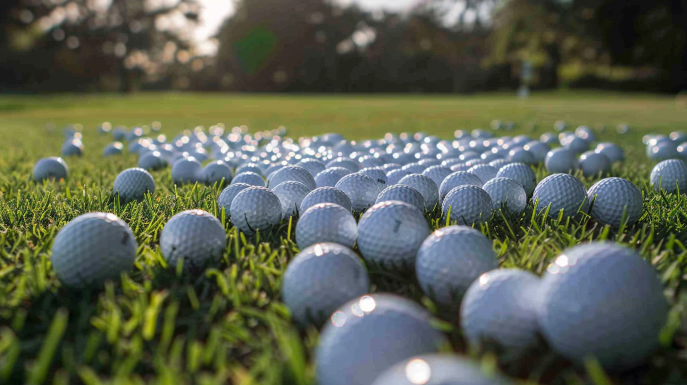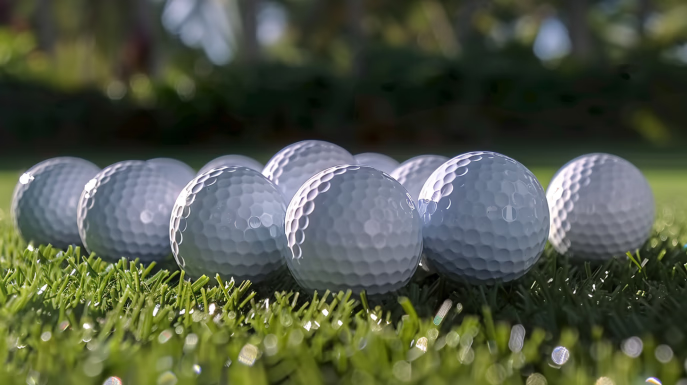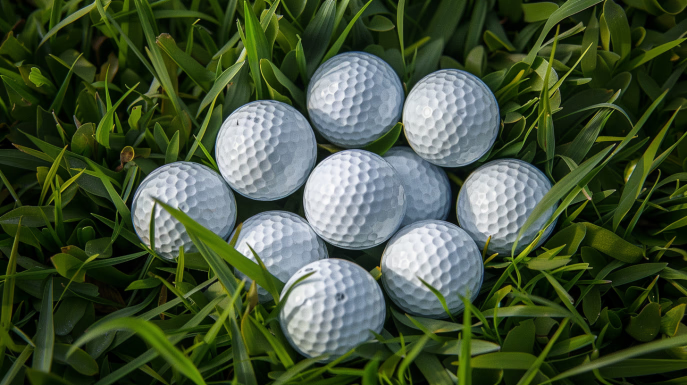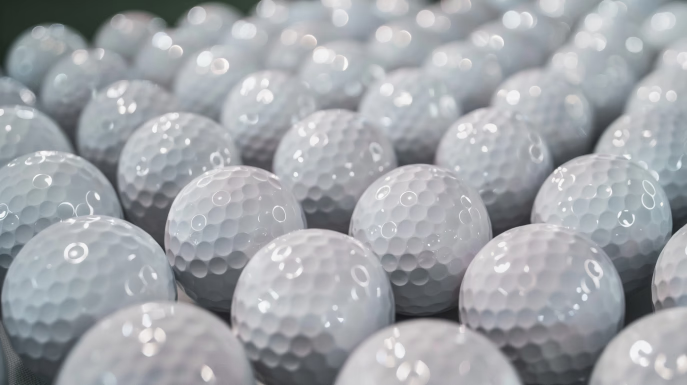Golf Balls Compression Chart: Find the Perfect Ball for Your Swing

Source : pinnaclegolfpros copyright
Golfers of all skill levels face a common challenge: finding the perfect golf ball for their swing. The key to unlocking optimal performance lies in understanding the importance of golf ball compression. This comprehensive article is designed to guide Canadian golfers through the complexities of golf ball compression, helping them navigate the vast array of options and select the ideal ball for their game.
Whether you’re a high-handicap amateur or a seasoned professional, this guide will delve into the various compression ratings, their benefits for different swing speeds, and how to use a golf balls compression chart to maximize your performance. Readers will gain insights into golf ball construction, brand comparisons, and expert recommendations, ensuring they make an informed choice that caters to their unique needs and playing conditions.
From low compression balls for slower swing speeds to high compression models for the power hitters, this article explores the nuances of golf ball technology, including the impact of core materials, cover design, and multi-layer construction. By understanding the relationship between compression, energy transfer, and overall feel, golfers will be empowered to make data-driven decisions that elevate their game to new heights.
Beyond just compression, this guide will also examine factors such as weather conditions, course environments, and personal preferences, providing a holistic approach to golf ball selection. By the end of this journey, Canadian golfers will be equipped with the knowledge and tools necessary to find the perfect golf ball for their swing, unlocking their true potential on the course.
Key Takeaways
- Understand the importance of matching golf ball compression to your swing speed for optimal performance.
- Discover the benefits of low, mid, and high compression balls for different skill levels and playing conditions.
- Learn how golf ball construction, including core and cover materials, influences compression and overall performance.
- Explore the role of factors like weather, course conditions, and personal preferences in selecting the right golf ball.
- Gain insights into the latest advancements in golf ball technology and how they can enhance your game.
Understanding Golf Ball Compression

In the game of golf, the concept of golf ball compression plays a pivotal role in optimizing performance and maximizing the potential of a player’s swing. Golf ball compression refers to the amount of deformation a ball undergoes when it is struck by a club.
What is Golf Ball Compression?
When a golfer swings their club and makes contact with the golf ball, the ball compresses, or deforms, to a certain degree. This compression allows for the efficient transfer of energy from the club to the ball, resulting in increased distance and optimal ball flight.
Importance of Matching Compression to Swing Speed
The key to achieving optimal performance lies in matching the compression rating of the golf ball to the player’s swing speed. Golfers with slower swing speeds benefit from lower compression balls, as these balls are designed to compress more upon impact, allowing them to generate greater distance and a higher, more forgiving launch angle. Conversely, players with higher swing speeds require higher compression balls to maximize energy transfer and maintain precise impact feel.
By understanding the relationship between golf ball compression and swing speed, golfers can make informed choices about the golf ball technology that best suits their individual needs, ultimately enhancing their overall performance and enjoyment on the course.
Low Compression Golf Balls
When it comes to the game of golf, one size does not fit all, especially when it comes to golf ball compression. For golfers with slower swing speeds, low compression balls offer a distinct advantage in terms of both distance and trajectory.
Benefits for Slower Swing Speeds
Low compression golf balls are specifically designed to cater to players with slower swing speeds, typically under 90 mph. These balls are engineered with a softer core and cover materials that compress more effectively upon impact, allowing golfers to generate greater ball speed and launch the ball higher with less effort. This makes low compression balls an ideal choice for recreational and high-handicap players who struggle to maximize distance with their current equipment.
Increased Distance and Trajectory
The combination of a soft, low compression core and a durable, yet forgiving cover material, such as Surlyn, enables low compression balls to deliver impressive distance and a higher, more stable trajectory. This optimized ball flight is particularly beneficial for golfers with slower swing speeds, as it helps them achieve greater carry distance and a more controlled descent into the green. The soft feel of these two-piece golf balls also contributes to a more enjoyable and confidence-inspiring experience on the course.
Mid Compression Golf Balls

For golfers with average swing speeds, mid compression golf balls strike the perfect balance between distance and control. These three-piece balls feature a firmer core and cover compared to their low compression counterparts, allowing for greater spin rates and enhanced shot-shaping capabilities. At the same time, the mid compression design still generates ample distance to satisfy the needs of recreational and intermediate-level players.
Ideal for Average Swing Speeds
The mid compression sweet spot is typically suited for golfers with swing speeds ranging from 85 to 100 mph. This compression range provides the optimal energy transfer and ball deformation at impact, maximizing both carry distance and stopping power on approach shots. Golfers in this swing speed category will find that mid compression balls offer a versatile performance profile that caters to their diverse needs on the course.
Balance of Distance and Control
Mid compression golf balls strike a delicate balance between distance and control, making them a popular choice among recreational golfers. The firmer core of these balls allows for greater energy transfer, translating to impressive distance off the tee. Meanwhile, the increased spin rates generated by the mid compression design provide better control and precision, especially on approach shots into the greens. This combination of distance and control is the hallmark of mid compression golf balls.
Popular Choice for Recreational Golfers
Given their ability to deliver a balance of performance attributes, mid compression golf balls have become the go-to choice for many recreational golfers. These balls cater to a wide range of playing abilities, from high-handicap amateurs to seasoned players seeking a versatile option. The mid compression profile offers the ideal blend of forgiveness, distance, and control, making it a reliable and enjoyable option for golfers looking to maximize their enjoyment on the course.
High Compression Golf Balls
For golfers with high swing speeds, high compression golf balls are the ideal choice. These balls are engineered to maximize distance and spin control, catering to the needs of low-handicap and professional players who demand the highest levels of performance.
Designed for High Swing Speeds
High compression golf balls feature a firmer core and cover that allow for maximum energy transfer and ball compression. This results in increased distance off the tee, as well as superior spin control on approach shots, particularly when targeting the greens.
Maximum Distance and Spin Control
The multi-layer construction and use of premium materials, such as urethane covers, in high compression balls cater to the needs of low-handicap and professional golfers. These features enable exceptional distance and precise spin control, allowing for a more controlled ball flight and enhanced tour performance.
Whether you’re a low-handicap player seeking the ultimate in performance or a skilled amateur looking to take your game to the next level, high compression four-piece golf balls with urethane covers are an excellent choice to maximize your distance and spin control.
Golf Ball Construction and Compression

To understand the relationship between golf ball construction and compression, it’s essential to explore the differences between two-piece and multi-layer ball designs. The number of layers and the materials used for the core and cover play a crucial role in determining the overall compression and performance characteristics of the golf ball.
Two-Piece vs. Multi-Layer Balls
Two-piece golf balls feature a simple design with a solid, single-layer core and a durable cover, typically made of surlyn. This straightforward construction results in a lower compression rating, making two-piece balls an ideal choice for golfers with slower swing speeds. The energy transfer from the club face to the ball is more efficient, helping to maximize distance and launch angle.
In contrast, multi-layer golf balls boast a more complex design, with multiple layers within the core and cover. These advanced constructions allow manufacturers to fine-tune the golf ball’s compression, feel, and overall performance characteristics. By using various core materials, such as rubber or urethane, and cover materials like surlyn or urethane, multi-layer balls can be engineered to cater to the needs of golfers with a wider range of swing speeds and playing styles.
Core and Cover Materials
The materials used for the core and cover of a golf ball have a significant impact on its compression rating and energy transfer. Softer core materials, like those found in low compression balls, allow for greater deformation on impact, resulting in a higher launch angle and increased distance for players with slower swing speeds. Conversely, firmer cores, often used in high compression balls, provide more energy transfer and a lower launch for golfers with faster swing speeds.
Similarly, the cover materials also play a crucial role in a golf ball’s compression and overall performance. Surlyn, a durable and cost-effective cover material, is commonly used in two-piece and some multi-layer balls. Urethane, a softer and more premium cover material, is often found in high-end multi-layer balls, offering enhanced control and spin characteristics around the greens.
By understanding the relationship between golf ball construction, core and cover materials, and compression rating, golfers can make informed decisions when selecting the optimal ball for their swing and playing conditions, ensuring they maximize their on-course performance and enjoyment.
Ball Fitting: Finding the Right Compression
Selecting the optimal golf ball compression for your swing is crucial to maximizing your performance on the course. The process of ball fitting involves accurately measuring your swing speed and then testing different compression ratings to determine the ideal match for your game.
Swing Speed Measurements
The first step in the ball fitting process is to accurately measure your swing speed. This can be done using a launch monitor, swing speed radar, or even a mobile app. Knowing your true swing speed will allow you to identify the compression rating that best aligns with your abilities, ensuring you can harness the full potential of your golf ball.
Testing Different Compression Ratings
Once you have your swing speed data, it’s time to put it to the test. Try out a variety of golf balls with different compression ratings, such as low, mid, and high-compression options. Pay close attention to factors like launch angle, spin rates, and overall performance to determine which ball best suits your swing characteristics.
By going through a customized ball fitting process, you can ensure you are playing a custom golf ball that maximizes your strengths and minimizes your weaknesses. This tailored approach to ball fitting will help you unlock new levels of distance, control, and consistency in your game.
Golf Balls Compression Chart: Find the Perfect Ball for Your Swing
Understanding the right golf ball compression for your swing speed is crucial to optimizing your performance on the course. This comprehensive compression rating guide delves into the key considerations to help you find the perfect golf ball for your game.
Comprehensive Compression Rating Guide
The golf balls compression chart below outlines the various compression profiles and the corresponding swing speed ranges that will help you identify the optimal ball for your needs. Whether you’re a high-swing-speed player seeking maximum distance and control, or a recreational golfer looking for a soft feel and increased launch, this chart will serve as your guide to finding the perfect golf ball compression.
| Compression Rating | Swing Speed Range | Performance Characteristics |
|---|---|---|
| Low Compression | Under 90 mph | Increased distance and trajectory, soft feel |
| Mid Compression | 90-105 mph | Balanced distance and control, suitable for recreational golfers |
| High Compression | Over 105 mph | Maximum distance and spin control, ideal for tour-level performance |
Brand and Model Comparisons
To further assist you in finding the right golf ball, we’ve compiled a comparison of popular golf ball models and their corresponding compression ratings, covering a range of price points and performance categories. Whether you’re looking for a premium ball or a more budget-friendly option, this guide will help you make an informed decision.
“Finding the right golf ball compression is crucial for maximizing your performance and enjoyment on the course. This comprehensive guide will empower you to make the best choice for your individual swing.”
– [Golf Expert Name], PGA Professional
Factors Affecting Golf Ball Performance
While golf ball compression is a crucial factor in determining the optimal performance for a player’s swing speed, there are several other variables that can influence the behavior and playability of golf balls. Understanding these factors can help golfers make informed choices when selecting the right ball for their game and the specific conditions they encounter on the course.
Weather Conditions
The weather conditions, such as temperature, wind, and moisture, can have a significant impact on the flight trajectory, spin rates, and overall durability of golf balls. Cooler temperatures, for instance, can cause the ball’s core to become more rigid, affecting the energy transfer and resulting in lower launch angles and less distance. Conversely, warmer weather can lead to a more lively and responsive ball, potentially increasing spin and control around the green side. Golfers should be mindful of these weather conditions and adjust their ball selection accordingly to optimize performance.
Course Conditions
The course conditions, including the firmness of the fairways and greens, can also influence the optimal golf ball choice. On hard, fast-playing courses, a ball with a firmer cover and compression rating may be preferable, as it can better withstand the impact and maintain a consistent trajectory and spin characteristics. Conversely, on softer, more receptive courses, a lower compression ball with a softer cover may allow for better green side control and feel. Golfers should consider the specific course conditions they will be playing to make an informed decision on the optimal ball for their needs.
Personal Preferences
In addition to the technical aspects of ball performance, personal preferences such as feel, color options, and ball markings can also play a role in the golf ball selection process. Some golfers may prioritize a specific feel or sound at impact, while others may have a preference for certain color schemes or dimple patterns that appeal to their aesthetic sensibilities. By considering these personal preferences, golfers can ensure they are playing a ball that not only performs well but also aligns with their individual style and preferences.
Golf Ball Technology Advancements
As the game of golf continues to evolve, so too does the technology behind the very equipment that players rely on to enhance their performance. In the realm of golf balls, manufacturers have been at the forefront of innovation, constantly pushing the boundaries of design and materials to deliver unparalleled performance for golfers of all skill levels.
Innovations in Core and Cover Design
At the heart of these technological advancements lies the golf ball’s core and cover. Manufacturers like Titleist, Callaway, and Bridgestone have invested heavily in research and development to optimize energy transfer, launch characteristics, and spin control. Through the use of advanced materials, such as high-resilience polymers and multi-layer constructions, golfers now have access to golf balls that deliver greater distance, enhanced control, and a softer feel to suit their individual preferences.
Aerodynamic Dimple Patterns
Equally important to the golf ball’s performance is its aerodynamic design. The intricate dimple patterns adorning the surface of modern golf balls play a crucial role in influencing ball flight, trajectory, and overall control. By meticulously engineering these dimple configurations, manufacturers are able to manipulate the ball’s lift and drag coefficients, allowing for more consistent and predictable ball flight, regardless of weather conditions or course topography. As golfers become more aware of the science behind these advancements, they can make more informed decisions when selecting the golf ball that best suits their game.
FAQ
What is golf ball compression?
Golf ball compression refers to the amount of deformation a ball undergoes when struck by a club. The compression rating is a measure of how much the ball compresses or deforms upon impact.
Why is it important to match golf ball compression to swing speed?
Matching the compression rating of a golf ball to a player’s swing speed is crucial for optimizing distance, spin, and overall performance. Golfers with slower swing speeds benefit from lower compression balls, while those with higher swing speeds require higher compression balls for maximum efficiency.
What are the benefits of low compression golf balls?
Low compression golf balls are designed for golfers with slower swing speeds. They provide increased distance and a higher, more forgiving ball flight due to their softer core and cover materials that compress more on impact.
What are the advantages of mid compression golf balls?
Mid compression golf balls offer a balance of distance and control, making them a popular choice for recreational and intermediate-level golfers with average swing speeds. They feature a firmer core and cover compared to low compression balls, allowing for greater spin and shot-shaping capabilities.
What are the benefits of high compression golf balls?
High compression golf balls are engineered for players with faster swing speeds. They feature a firmer core and cover that allow for maximum energy transfer and ball compression, resulting in increased distance and superior spin control, particularly on shots into the greens.
How does golf ball construction affect compression?
The construction of a golf ball, including the number of layers and the materials used for the core and cover, significantly impacts the overall compression rating. Two-piece balls generally have a lower compression compared to multi-layer balls, which can be designed with a softer or firmer compression profile.
How can I find the right golf ball compression for my swing?
To find the optimal golf ball compression for your swing, it’s important to accurately measure your swing speed and then use that data to determine the ideal compression rating. Testing different compression balls and evaluating factors like launch angle, spin rates, and overall performance can help you identify the perfect ball for your game.
What factors can influence golf ball performance beyond compression?
In addition to compression, other factors that can affect golf ball performance include weather conditions (temperature, wind, moisture), course conditions (fairway and green firmness), and personal preferences (feel, color, aesthetics).
How has golf ball technology advanced in recent years?
Advancements in golf ball technology have led to innovations in core and cover design, as well as improved aerodynamic dimple patterns. These technological developments have helped optimize energy transfer, launch characteristics, and spin control, allowing golfers to achieve greater distance and better control.

